Ensuring that you and your family have enough food in your house to make it through several weeks without having to go out to a grocery store is an essential component of being prepared.
The chaos that was 2020 taught us this, did it not?
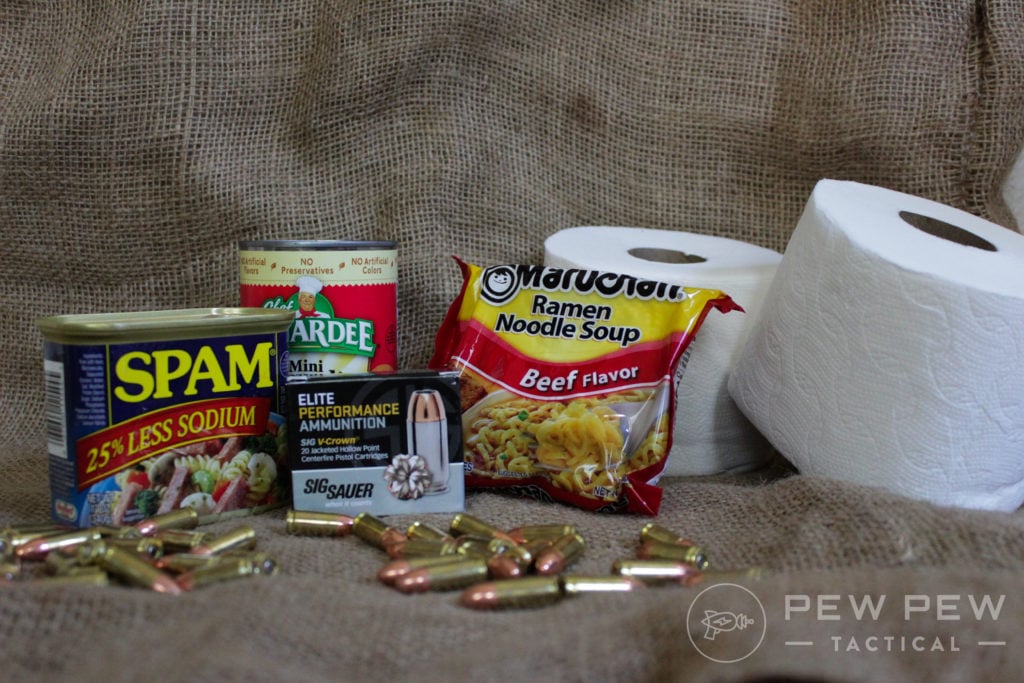
For all of mankind’s history, we’ve kept enough food stored up so that we could last through the winter months – the times when there was no harvest.
Within the past 60 years or so, we’ve come to the conclusion that we no longer have to store food. We can just go to the grocery store anytime we dang well please and pick up a frozen dinner or two.
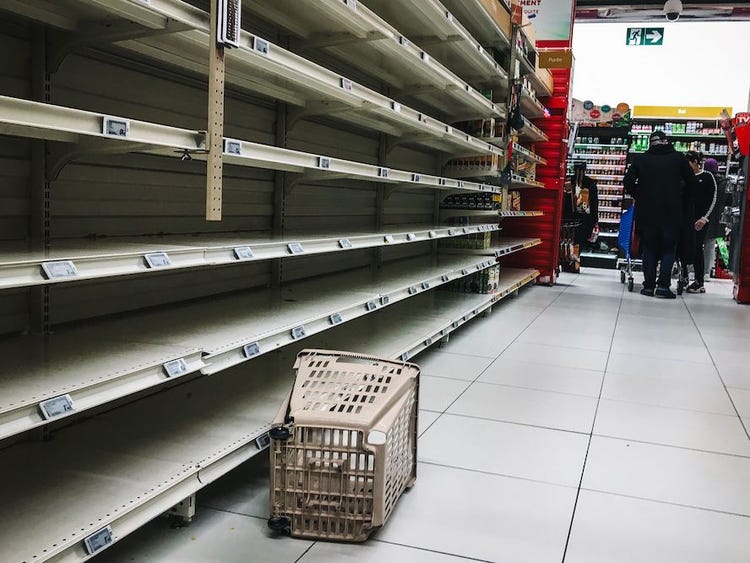
According to the Census Bureau, a little over 80% of Americans have roughly three days’ worth of food in their house at any given time. And just over 50% have three days’ worth of water for their family.
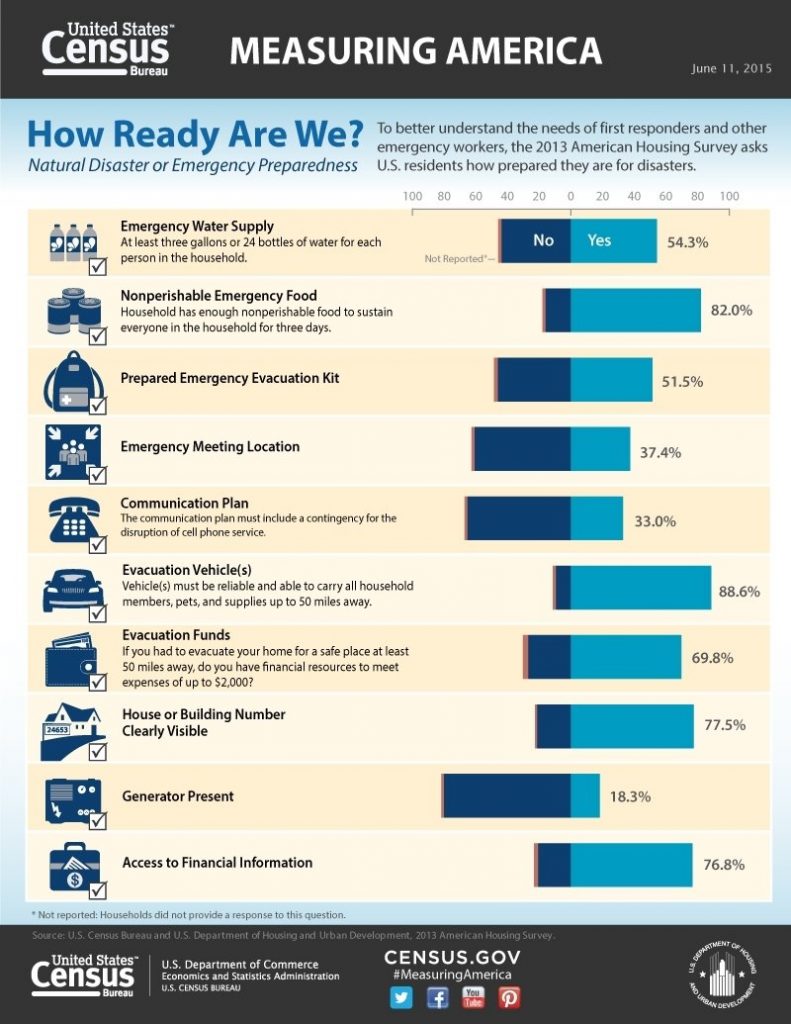
This means we have roughly three days post-disaster before society begins to break down over resources.
History has proven that it often doesn’t even have to be that long.
Power outages in New York City in the 1970s resulted in massive lawlessness within the span of only a few hours.
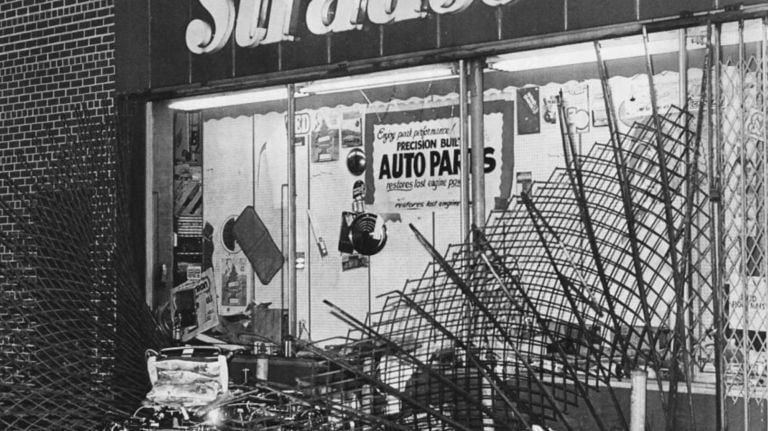
So, to insulate ourselves against disaster and ensure our families remain well-fed, nourished, and safe, we need properly stocked food.
But what does that mean, and how do you do store food long-term?
We’ll cover what kinds of food can store for long periods and how to ensure your food doesn’t go bad.
Stick with us to learn more!
Table of Contents
Loading…
What Food Should I Store Long-Term?
You already know you can buy barrels of milk at Sam’s Club…but it’ll go bad within a month’s span.

So, we have to buy food that lasts. What does that look like?
The most economical option can be found at your local grocery store.
Foods like:
- Dry Beans and Lentils
- Pasta, Macaroni and cheese (in the box)
- Oatmeal
- Cup-of-soups
- Ramen noodles
- Refined white flour (the whole wheat stuff goes bad quicker)
- Dehydrated fruits/vegetables
- Canned food
- Dehydrated milk
- White rice (brown rice goes rancid pretty fast)
- Salt (non-iodized for meat preservation.)
- Coffee
- Anything freeze-dried
- Nuts
- Potato flakes
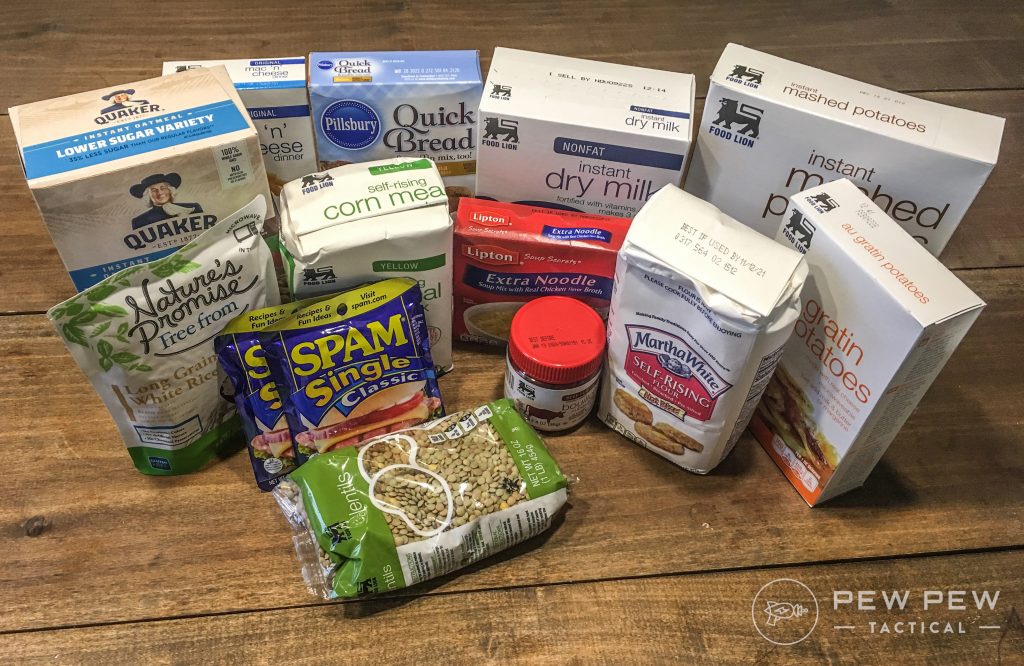
You can build a rather impressive stock of the aforementioned items, and better yet, they keep for a while. (In some cases, years!)
AND you’ll have an arsenal of recipes at your fingertips with just these basic ingredients alone. You can check out some of our favorite DIY MRE recipes here!
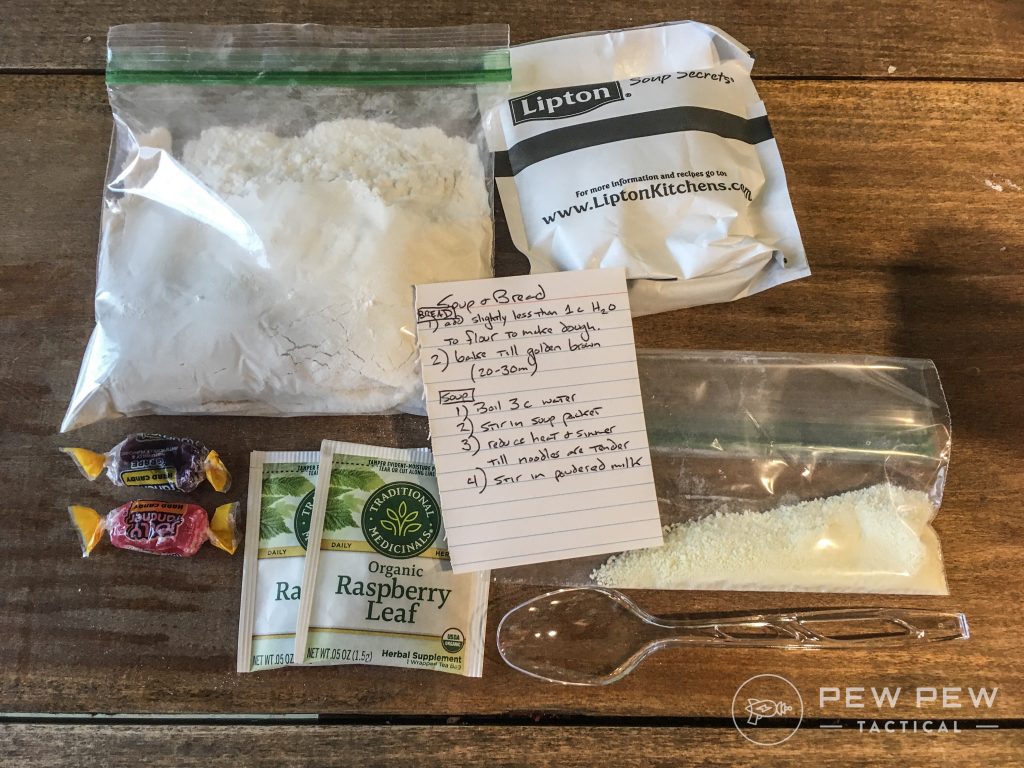
If you prefer to make your own MRE concoctions, it’s worth noting you will need some kind of vacuum sealer to do it.
Oxygen is the enemy of preservation so sucking all the excess out keeps things fresh for longer.
If you’re looking for more instructions on that, I suggest you pick up a copy of both Languille’s Meals in a Jar and the NOLS book Cookery.
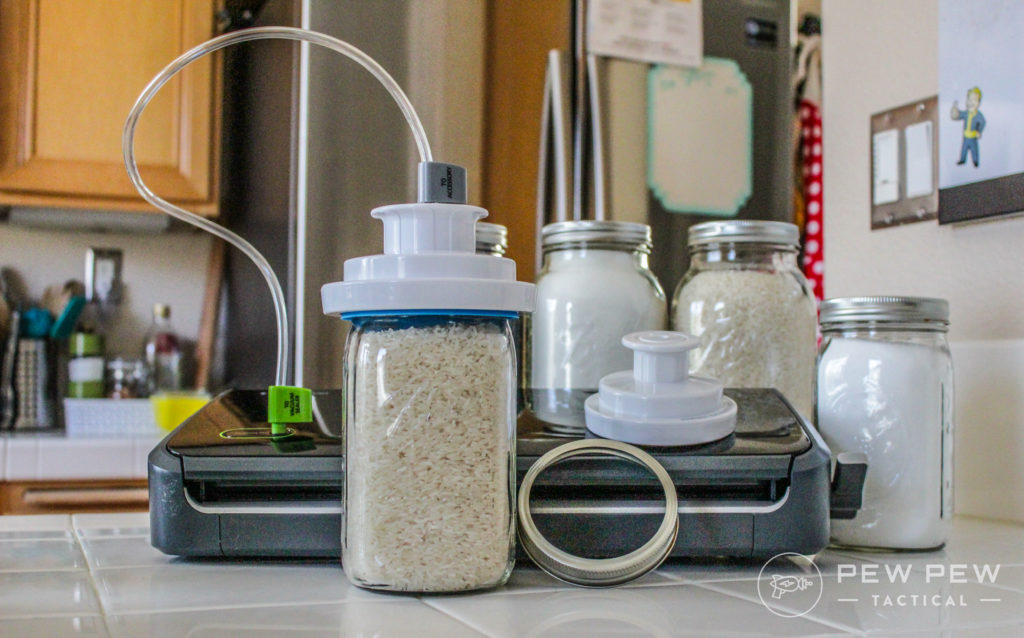
Of course, there are other pre-prepared options on the market, mainly MREs, freeze-dried meals, and survival-food-in-a-box.
I prefer MREs for their sheer convenience. Toss them into a BOB (which we show you how to make!) or put them in a workplace disaster kit and forget about them until you need them.
They include a complete meal, just open up the MRE and eat.
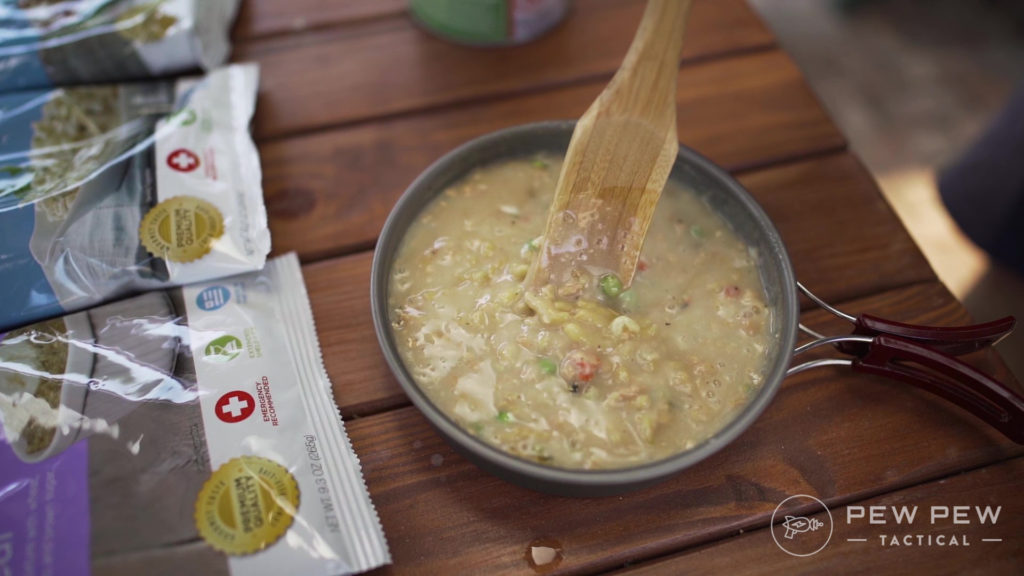
That said, pre-packaged MREs often come at a higher cost.
If you’re interested in going this route, I highly recommend you check out our analysis of the Best MREs on the market to know what’s worth your money.
How Much Food Should I Store?
There’s a lot of debate on the proper answer to how much is enough within the prepping and disaster mitigation world.
But, I believe that one to three months’ worth will ride you through most disasters.
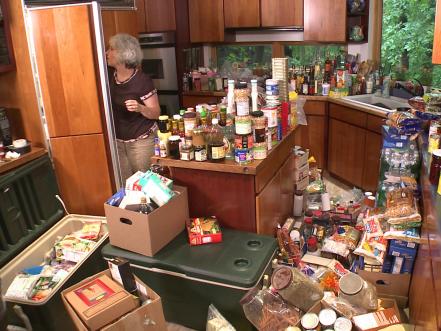
If you’re just starting out, that may sound like a lot of food, but you can easily store that out of sight, even within a cramped single-bedroom apartment.
The National Outdoor Leadership School breaks it down like this. An average person who needs 2,500 to 3,000 calories per day needs 1.5 pounds of food a day.
So, a family of two needs 90 pounds of food to make it a month.
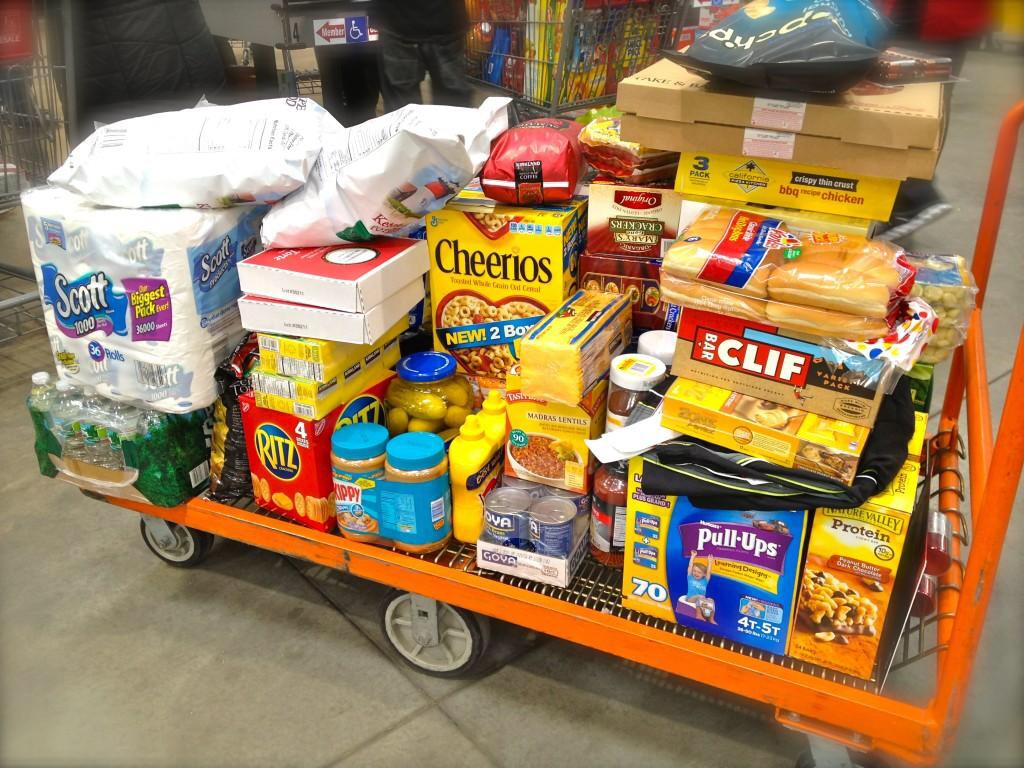
While that sounds like a lot, you could do that with about $100.
A 25-pound bag of rice from Sam’s Club, 12 boxes of spaghetti, a dozen cans of spaghetti sauce, 7 pounds of dry beans, 60 cans of fruits and vegetables…and you’re real close to that goal.
It’s that simple.
Everyone I’ve ever convinced to start storing food told me how surprised they were at the ease of the process.

If you need tips on how to properly stockpile without filling up several rooms of your house, check out our guide on How-To Stockpile Food & Water.
How to Store Food for Years
Alright, so you know why you need to store food, you know what to store, you know how much…now you need to know how to actually store food for the long haul.
Thankfully, this step is easier and less complicated than it may initially seem.
The bottom line? Keep it dry and cool.
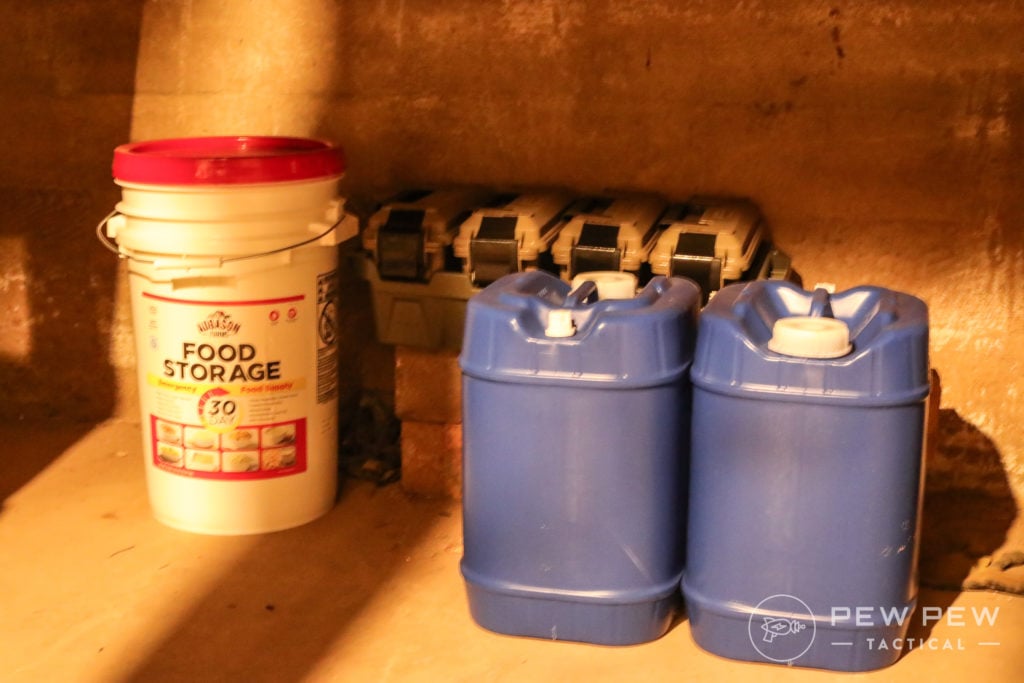
Seriously, that’s all there is to it.
For starters, I highly recommend getting either 5-gallon buckets or some other type of plastic bin to store your food.
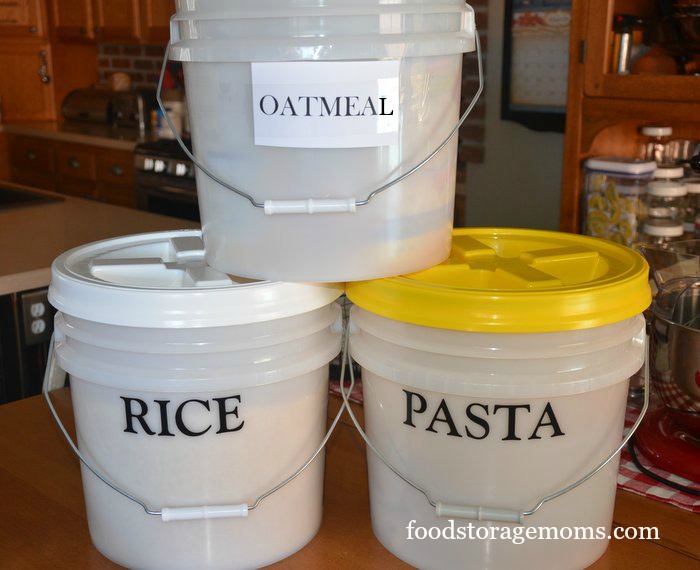
This protects your food from pests and moisture while simultaneously keeping things organized.
If you opt for the 5-gallon bucket method, pick up Gamma Seal Lids. These screw-top lids seal moisture out of your buckets but also make food easier to access when it comes time to eat.
-
25% off all OAKLEY products - OAKLEY25
Copied! Visit Merchant
I also recommend purchasing silica oxygen-absorbing packets. They are cheap and easy to find online. What you don’t use in your food supply can easily be used in your gun safe as well.
Make sure that you get the packets…not just a collection of beads in a bag. You don’t want them getting mixed up in your food since you can’t eat them.
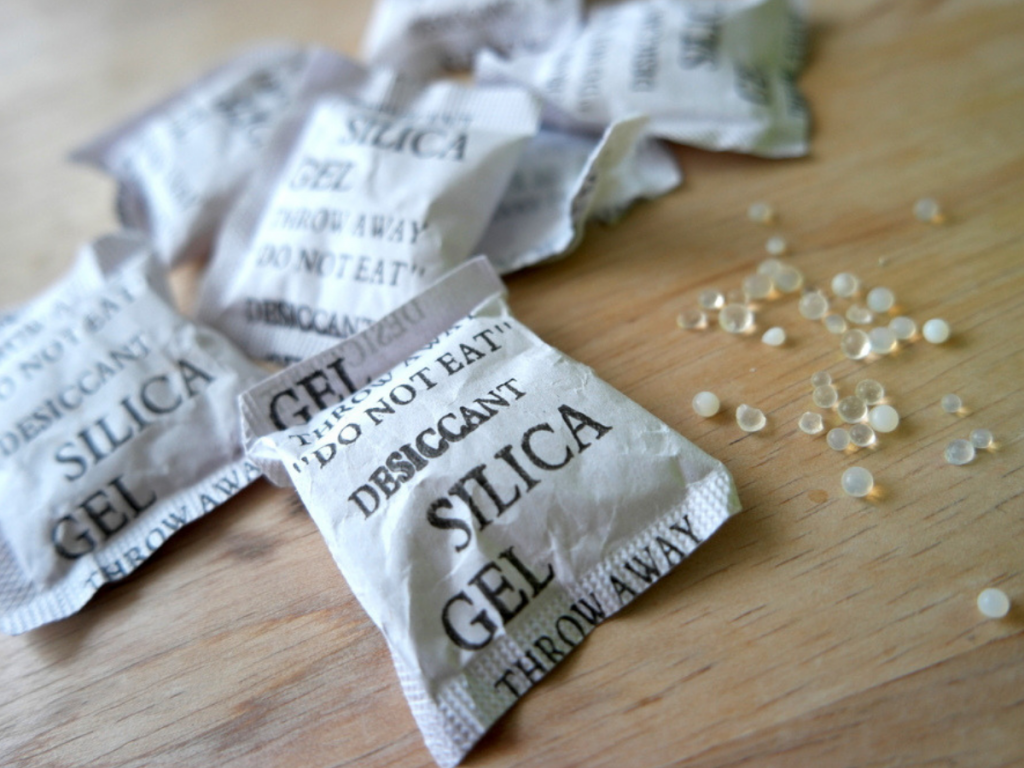
A packet keeps moisture at bay and proves easy to remove from the situation when it comes time.
If you’re storing canned goods, just ensure you keep them safe from rust and dents. If either of these happens, the food inside can begin to grow some particularly nasty toxins you don’t want to eat.
Coating a can with varnish can also help protect it from rust.
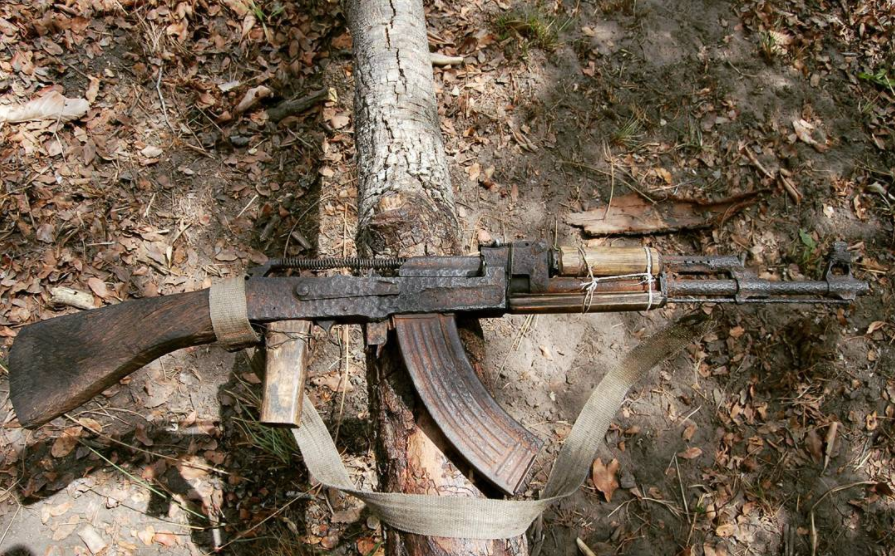
Provided that you’re doing everything you can to keep moisture and heat at bay, you’ll do a fantastic job of keeping your food safe to eat for the long haul.
Where Should I Store My Food?
Now that you have your food supply all neatly organized, the next step is to stow it away.
For starters, I recommend packing your kitchen.
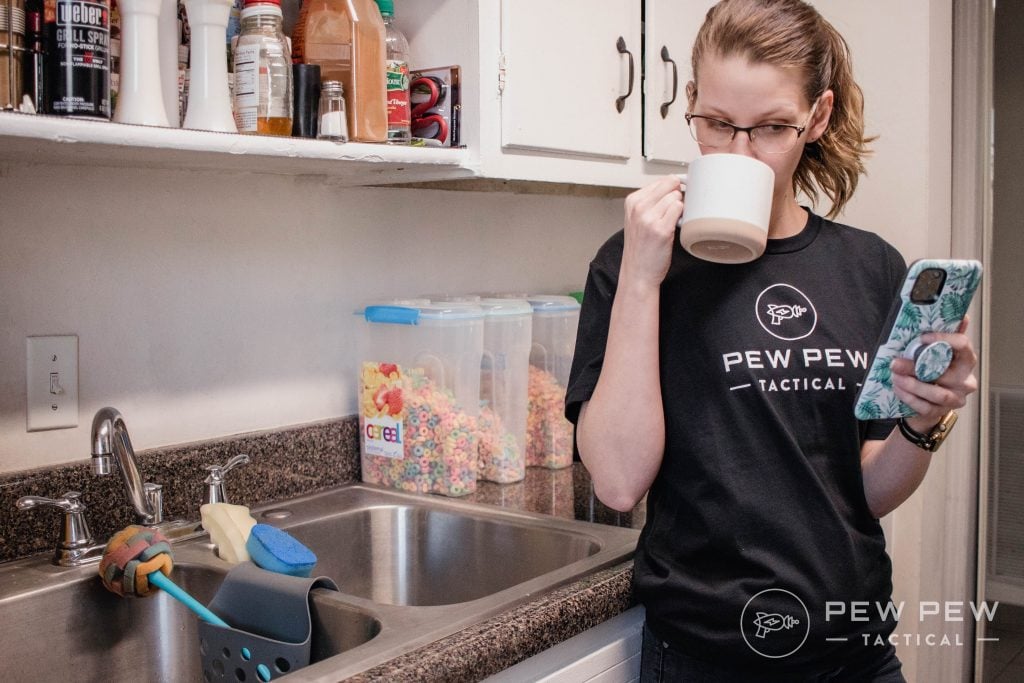
Your cabinets and pantry likely have a lot of unused space in them already. Pack all of those spaces as much as you can while simultaneously remaining organized.
A hanging shelf system for my pantry door allows me to stow another 25 pounds of food in my pantry by just taking advantage of empty space.
-
25% off all OAKLEY products - OAKLEY25
Copied! Visit Merchant
But what about those pesky buckets? What do I do with those?
The best option is to put them in a closet where they will be away from extreme heat and humidity.
In an apartment, they can easily store in the back of a closet behind hanging clothes.
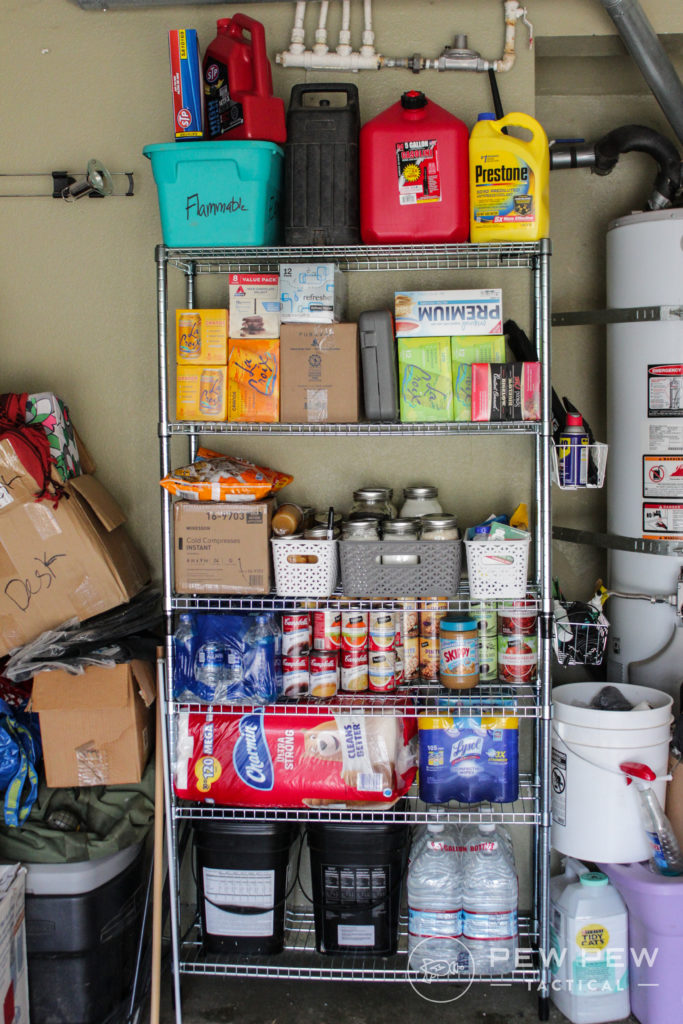
If space permits, though, I recommend a basement with a dehumidifier. Food safely stores in such a space with little fear of premature rot.
The places that I don’t recommend storing your food are in your attic, a sunroom, or in a shed out back somewhere.
Those places expose food to a lot of pests, heat, and humidity. The end result? Food only lasting a matter of months.

What Other Items Should I Store Long-Term?
While having food stored is great, you need a few other items on hand as well.
A gigantic sack full of rice is fantastic, but unless you have the means to cook it, you’re somewhat out of luck.
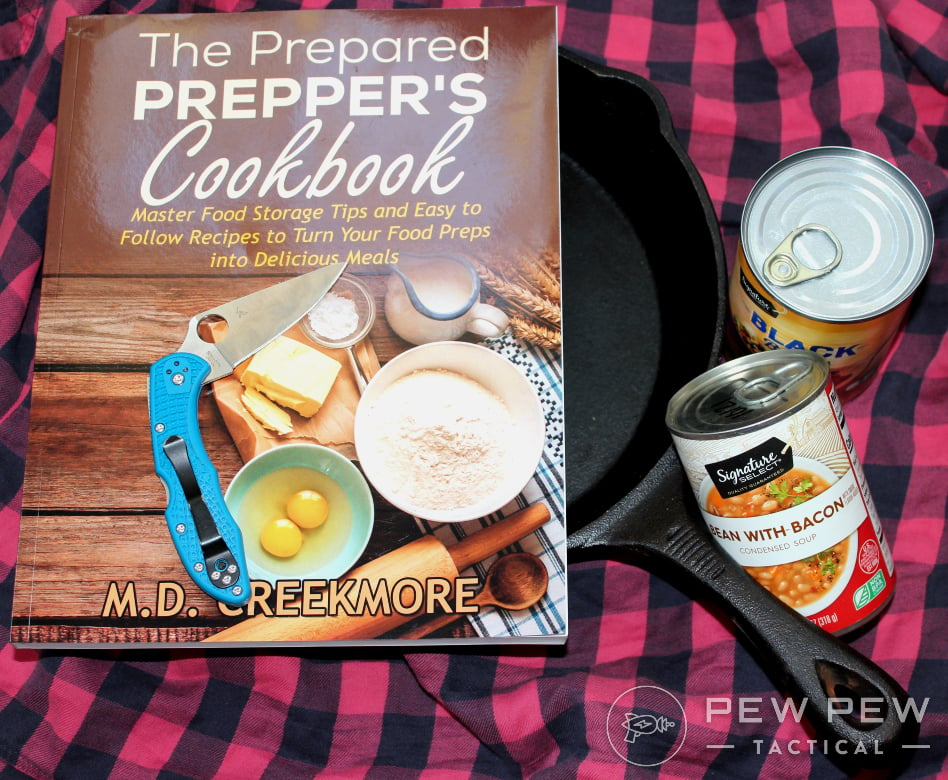
Here are some other items you want in place:
- A means of off-grid cooking. I highly recommend a rocket stove.
- A mess kit, or pots and pans of some kind.
- Can openers
- Multivitamins
- Spatulas, ladles, and other similar kitchen tools
- Dish soap
- Sponges
- Water (Read up on how to stockpile water here!)
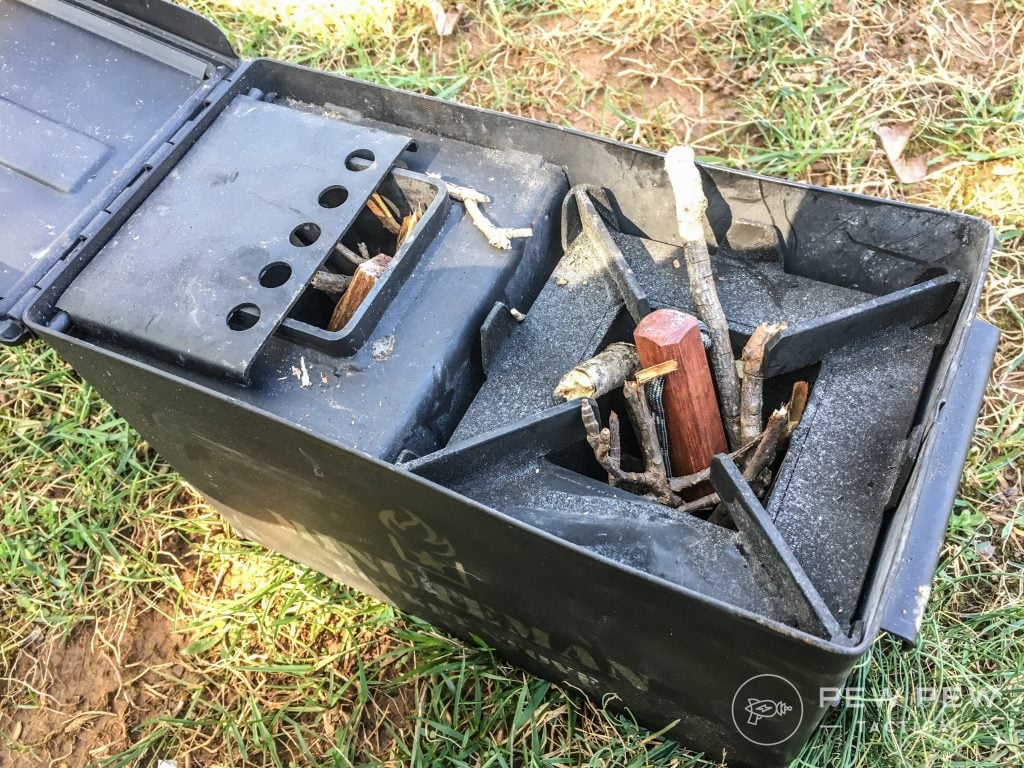
Final Thoughts
A properly stocked food supply can mean the difference between nourishment and starvation.
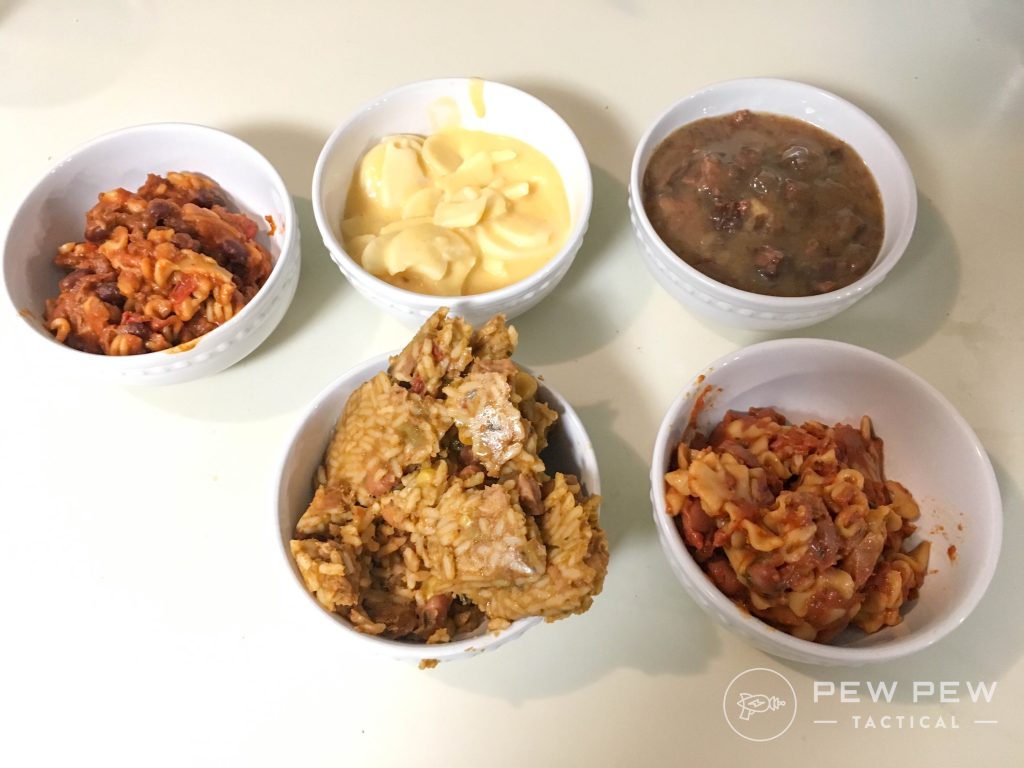
So please, do what you can now to protect yourself. Start building your food supply. It’s cheap, it’s easy, and it truly doesn’t take up that much space.
Are there other tips we didn’t cover? Let us know in the comments below! Want to learn something else you can prepare to protect your family? Learn how to Build a Family Bug Out Bag or a Family Emergency Plan.

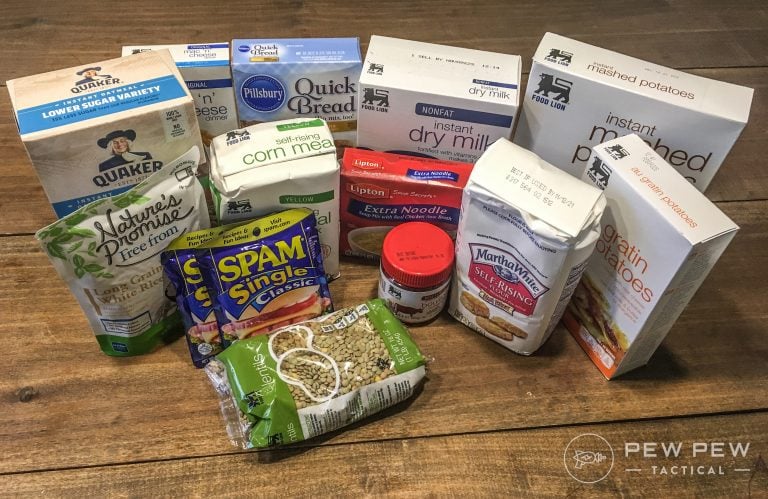









9 Leave a Reply
I haven't read all the replies, so please forgive me if I'm going over a road already traveled. So many of the bulk survival foods are reportedly rather bland. My recommendation would be to be sure to store assorted spices to your inventory. Typically in small containers, they should not have much impact on your storage space.
That's a really good idea, Dennis. To their credit, I'll take bland over MRE flavor any day!
Thank you for sharing your informative article on long-term food storage. As a farmer of 15 years, I know firsthand the importance of food preservation in times of emergency. Your article provides valuable information on various methods of food preservation and storage, including canning, dehydrating, and freezing.
In addition to the techniques you mentioned, I would also like to recommend a book called "The Lost SuperFoods." This comprehensive guide provides in-depth information on lesser-known superfoods that have been used for centuries to promote health and vitality. I was amazed by the amount of information and the benefits of these superfoods. It's a valuable resource for any prepper or survivalist. You can check it out here: superfoods.recensorium dot com
Thank you again for your helpful article. I'm sure it will be a valuable resource for anyone looking to stock up on emergency food supplies.
You wrote "I also recommend purchasing silica oxygen-absorbing packets. They are cheap and easy to find online. What you don’t use in your food supply can easily be used in your gun safe as well."
Aren't silica (gel) and oxygen absorber packs different things serving different purposes? Also, if one uses oxygen absorber packs to preserve food, it needs to be sealed (eg, in a mylar bag) with oxygen absorbers inside, so that oxygen from the ambient air cannot penetrate the sealed pack. It makes no sense to use oxygen absorbers in gun safes, however the silica gel packs can be used in them to control the humidity.
Silica gel absorbs moisture. Oxygen absorber packs contain iron powder or filings. Bot are essential to not only food storage, but steel and iron (guns, knives) as well
Because I spent so much of the last of my working years involved with Industrial Gases, I go a different route for long term storage of dried staples. A sealed container, a Schraeder Valve, a small vacuum pump,, and a bottle of compressed Nitrogen will let beans, lentils, rice and others keep fo up to 50 years.
For most, this is an expensive start up, for me it wasn't, as I already owned most of what I needed Togo this route. Nitrogen purging removes all Oxygen, which prevents the foods from oxidizing, which is why they turn rancid.
So if you're mechanically inclined, I highly suggest it over Mylar and O2 Absorbers.
Great article for me as I recently had one of those big ass concrete tornado shelters put in the backyard. Had a tornado blow by less than a mile from my home last year, so storing long term inside the house seemed like a lose-lose idea. Not finish setting up but this article gave me more info to work with.
If you are serious about this and are going to store long term... invest a little money and get commercial/industrial grade 'hard shell portable bulk type containers' with seals intended for long term storage of many years and from which the air can be evacuated to create a vacuum that lasts for years. Industry and government uses these for long term storage of (mostly dried) foods and rations and equipment/ammo/firearms/clothing/medical supplies/ lots of things. Not the ones used for storage of things in the kitchen pantry or refrigerator, they may last for a while but long term they will lose their integrity.
quote/ John
If you are serious about this and are going to store long term... invest a little money and get commercial/industrial grade 'hard shell portable bulk type containers' with seals intended for long term storage of many years and from which the air can be evacuated to create a vacuum that lasts for years. Industry and government uses these for long term storage of (mostly dried) foods and rations and equipment/ammo/firearms/clothing/medical supplies/ lots of things. Not the ones used for storage of things in the kitchen pantry or refrigerator, they may last for a while but long term they will lose their integrity.
December 13, 2022 11:10 am /quote
And where are people to find these magical commercial/industrial grade "hard shell portable bulk type containers" oh master of long term storage. Many preppers are military veterans and have seen the kind of containers. But knowing WHERE to locate them is the magic. Sure, you can do a google search. Good luck on weeding the junk out and finding a source (preferably MULTIPLE sources) for these containers.